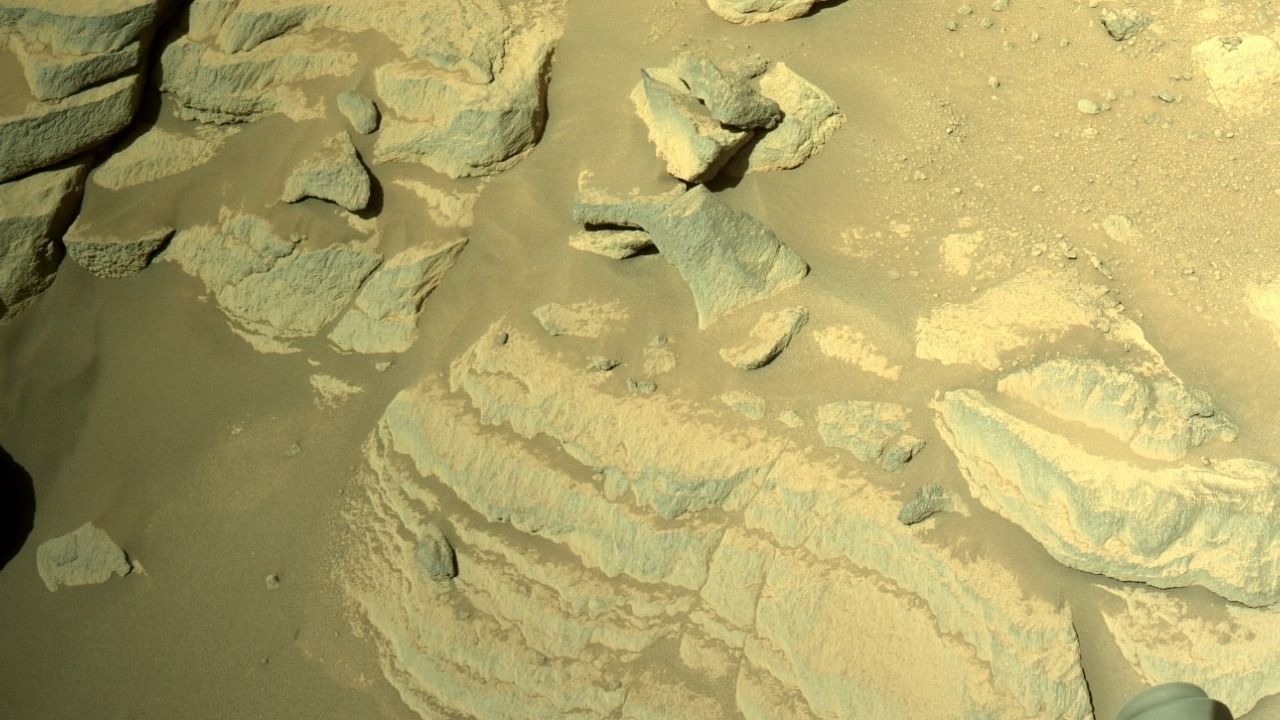
NASA's Perseverance rover, currently exploring Jezero Crater on the Red Planet, has snapped new pictures showcasing layered rocks.
The layered rocks, which form in water, may hint the existence of water on ancient Mars, NASA said.
These strikingly layered Mars rocks could also be the Perseverance rover's next sampling target.
"Get a load of these layers! I'm getting out my abrading tool to take a look inside," they wrote on Twitter.
"Layered rocks like this often form in water, and can hold clues about what their environment used to be like. Let's see if this would be another good place for #SamplingMars," they added.
Perseverance rover was launched on July 30 last year and arrived at the red planet on February 18 after a 203-day journey traversing 472 million km.
Perseverance explored the floor of Jezero Crater, which was once a lake and a dried-out river delta at the crater's edge.
Its primary mission is to search for signs of ancient life on Mars. The rover also aims to characterise the planet's geology and past climate, paving the way for human exploration of the Red Planet, as well as become the first mission to collect and cache Martian rock and regolith.
The rover has so far collected two rock samples, giving scientists insight into Mars' history. Analysis of the rocks samples show signs that they were in contact with water for a long period of time, boosting the case for ancient life on the Red Planet.
Recently the six-wheeler rover also sent images from Mars revealing that billions of years ago, when the Red Planet had an atmosphere thick enough to support water flowing across its surface, Jezero's fan-shaped river delta experienced late-stage flooding events that carried rocks and debris into it from the highlands well outside the crater.
The rover provided images of long, steep slopes called escarpments, or scarps in the delta, which formed from sediment accumulating at the mouth of an ancient river that long ago fed the crater's lake.
The images also provide insight into where the rover could best hunt for rock and sediment samples, including those that may contain organic compounds and other evidence that life once existed there.
Check out the latest DH videos: